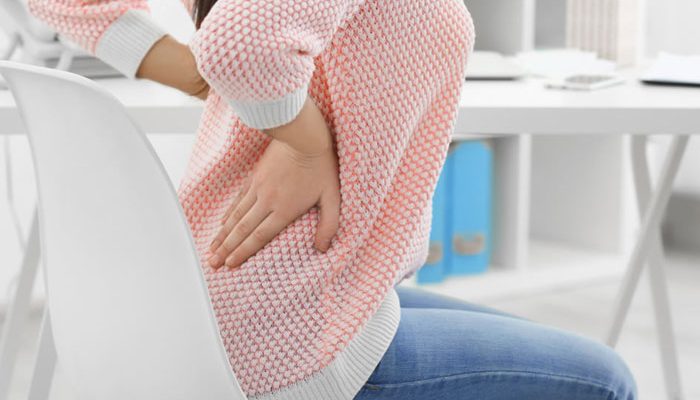Bloating, water retention, headaches, fatigue, acne, mood swings, and cramping! If you are a woman, you likely know first hand that these symptoms are very commonly associated with menstruation. For a significant percentage of women, lower back pain can also be added to this list, which makes menstruation even more challenging! Back pain associated with menstruation is typically experienced along the center portion of a woman’s lower back. While women who experience back pain during menstruation will generally get relief a few days after menstruation begins, the pain can still be debilitating for some – even to the extent to interrupt daily activities. If you can relate and suffer from lower back pain during “that time” of the month, it is important to understand why the pain occurs and how you can manage the symptoms.
Understanding Lower Back Pain And Menstruation
Like many of the symptoms a woman deals with monthly, lower back pain during menstruation can also be attributed to hormonal changes. Specifically, the prostaglandins are mostly responsible. Prostaglandins are hormones that promote uterine contraction, both during childbirth and also during the menstrual cycle so that the uterine lining can be shed. While working their magic in making a woman’s uterus contract, prostaglandins also affect the lower back muscles. Therefore, if a woman is experiencing heavy contractions and cramping, this pain and discomfort is likely radiating from her lower abdominal muscles into the lower back. While experiencing lower back pain during menstruation can be completely normal, it is still important that those women who suffer speak with their primary care physician or gynecologist, as lower back pain during menstruation can also be a symptom of endometriosis.
If your lower back pain is due to menstruation, you should quickly find relief after menstruation begins. If your pain subsides beyond the menstrual cycle or if you notice other symptoms such as leg pain, tingling or weakness, it is important to seek immediate medical attention. Stridewell Tips
Managing Lower Back Pain During Menstruation
Since many women lead very busy lives and work both inside and outside of the home, it is no wonder that menstruation can often sneak up at a moment’s notice. If you routinely deal with very uncomfortable or even debilitating lower back pain just before menstruation, the first step to take is to gain an awareness of your cycle. By always knowing which cycle day you are on, you can focus your efforts around altering your lifestyle to manage your pain and plan for any interruptions. To gain an in-depth awareness of your cycle, you could use older charting methods or download a number of apps that will do the work for you! Aside from tracking your periods, many apps will also allow you to input daily symptoms, which is very helpful in managing your pain.
After becoming more familiar with your cycle and when symptoms will likely occur, you can then modify your lifestyle to try and see which changes can help minimize your pain. For example, it is thought that caffeine, chocolate, alcohol, and smoking can all increase lower back pain related to menstruation. Therefore, reducing or eliminating your intake in the days leading up to menstruation could make a significant difference. On the other hand, exercising, eating a healthy diet, staying hydrated, and taking nutritional supplements containing magnesium and Vitamin B can all make you feel better and experience less pain. Further, you may find it beneficial to take anti-inflammatories a couple of days prior to your expected date of menstruation. A couple of good over-the-counter options include ibuprofen or naproxen. If you still find no significant relief after trying all of these options, it may be best to speak with your provider about using birth control pills to manage and alleviate your menstrual symptoms.
read article



